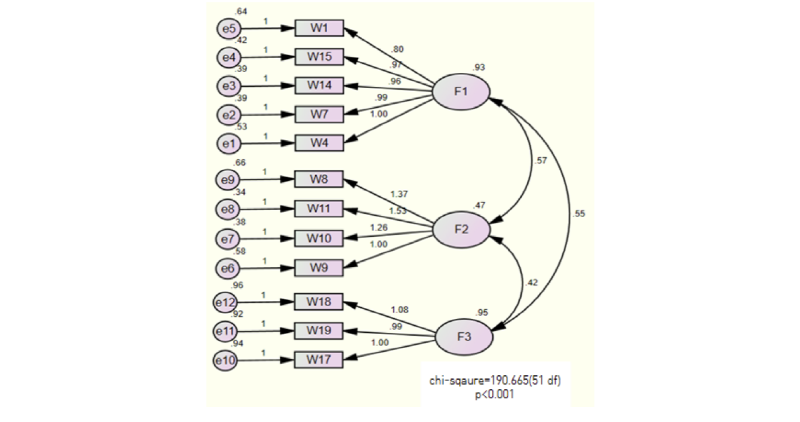Abstract
Objectives: The purpose of this study was to investigate the perception of workplace bullying in the dental hygienists to use them as basic data for improving the organizational relationship of the dental hygienists. Methods: The subjects were 302 dental hygienists that had been working at the dental clinics and dental hospitals. These data were analyzed by SPSS Version 20.0 (IBM Co., Armonk, NY, USA). Factor analysis was used for exploratory and confirmatory data. Independent t-test and one-way ANOVA were used to find out mean differences for verbal violence, improper business, and improper work environment according to characteristics of subjects. Results: Upon the study results, there were statistically significant differences between the verbal violence and working patterns according to the mean differences of the sub-factors on subject’s characteristics. Also, there were statistically significant differences between the improper work environment and all of subject’s characteristics. However, there was no statistically significant differences in the improper business. The factor analysis showed that the Workplace Bullying of the dental hygienists was composed of three elements, namely 'verbal violence', 'improper business,' and ‘improper work environment.’ The validity of the model examined by a confirmatory factor analysis satisfied most of the relevant requirements. The Cronbach's aplha shows a good reliability. Conclusions: In conclusion, it was proven that dental hygienist's Workplace Bullying measurement tool had high validity and reliability. Furthermore, this study can be used to improve dental hygienists' organizational relationship. Therefore, by identifying the recognition of the dental hygienists, this study can contribute to affect a positive influence in the dental hospitals.
Figures & Tables

Fig. 1. Model of confirmatory factor analysis


